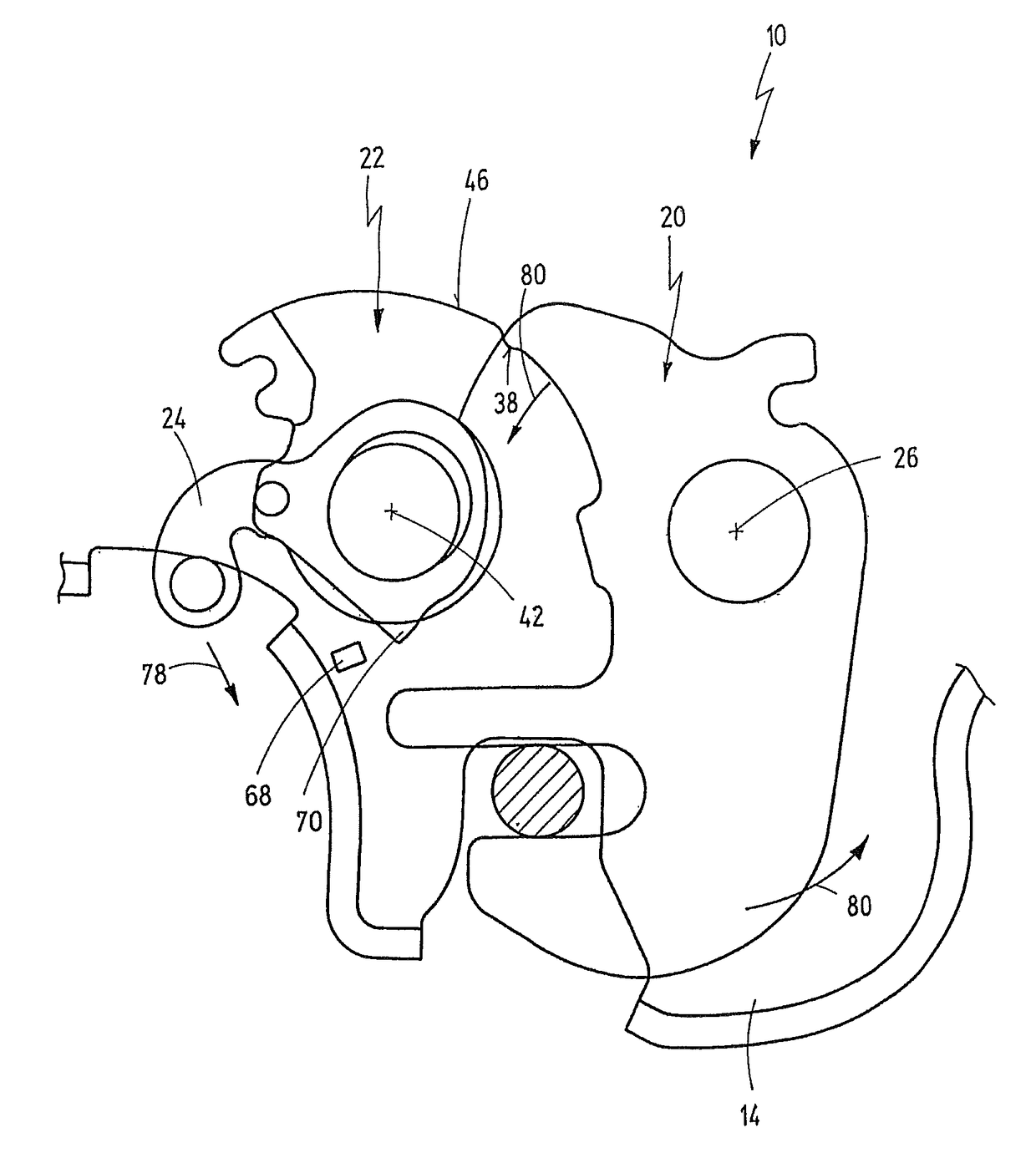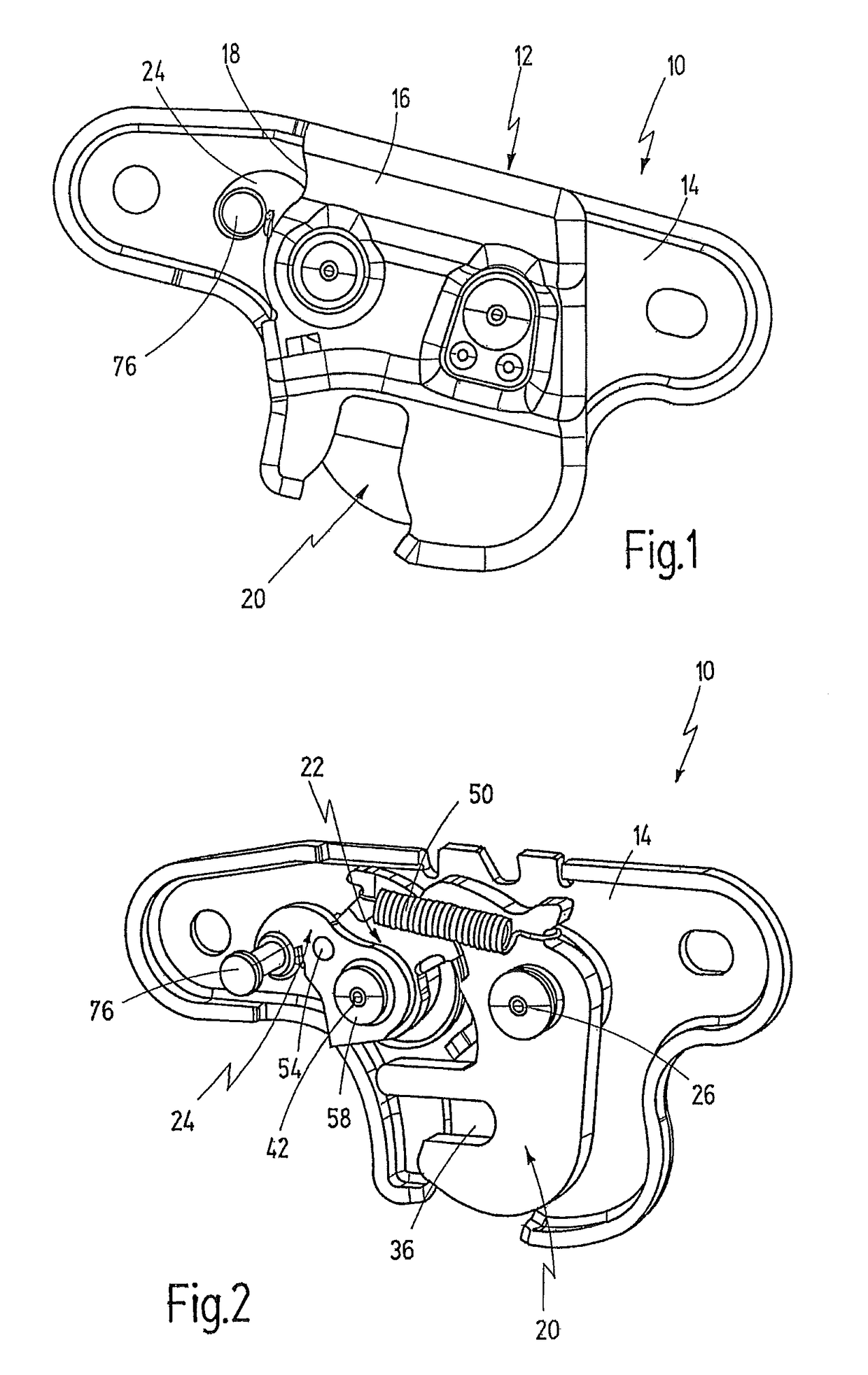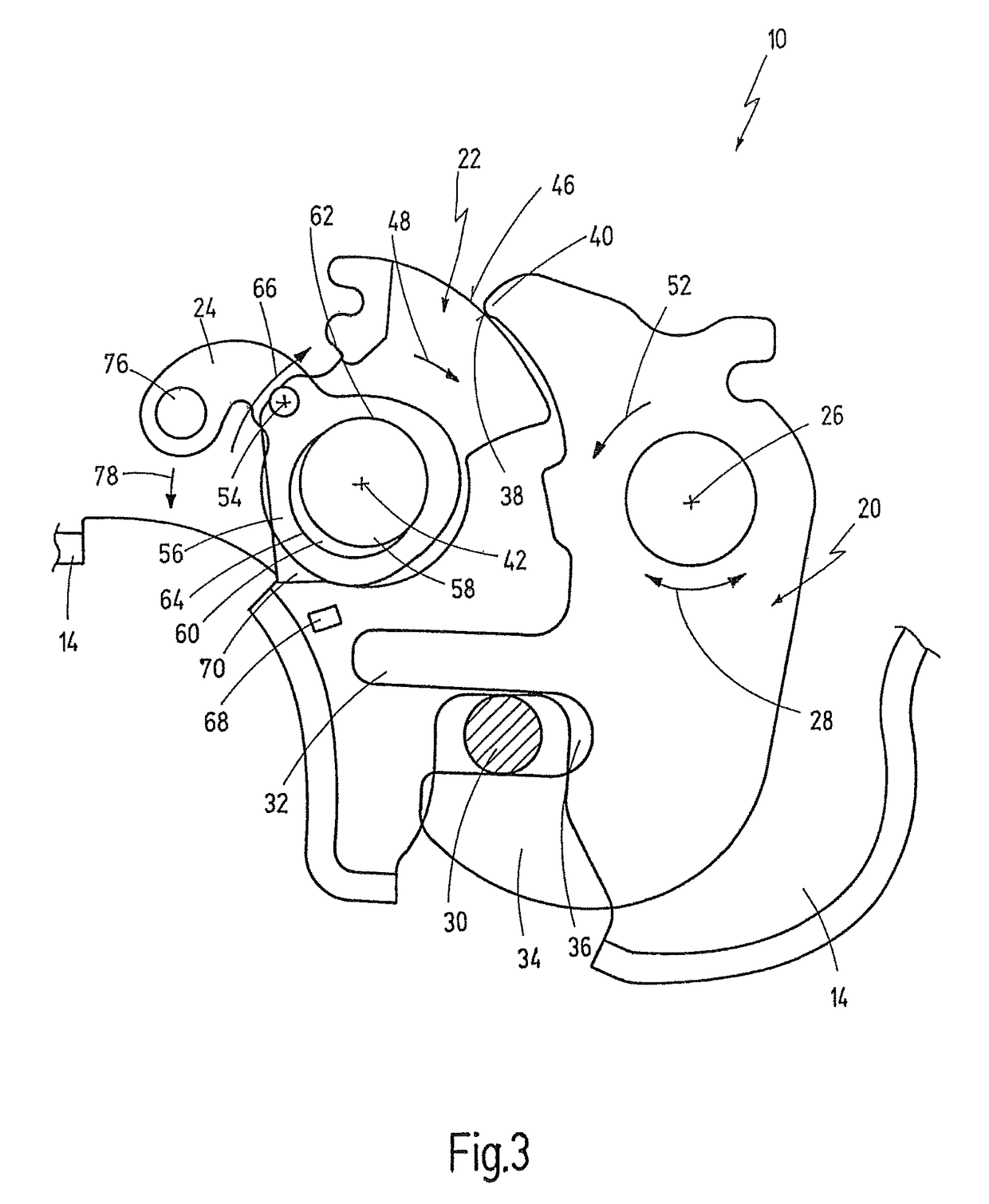Device for locking a vehicle seat
a vehicle seat and locking technology, applied in the direction of couplings, vehicles/pulleys, ropes and cables, etc., can solve the problems of not being able to ensure or ensure the effect of an adequate degree, not being able to produce sufficient counterforce, and not being able to always be suitable, so as to improve the impact resistance of the device
- Summary
- Abstract
- Description
- Claims
- Application Information
AI Technical Summary
Benefits of technology
Problems solved by technology
Method used
Image
Examples
Embodiment Construction
[0037]FIGS. 1 to 6 illustrate a device, which is provided with the general reference number 10, for locking a vehicle seat. The device 10 serves in particular for anchoring a vehicle seat on the floor of a vehicle body.
[0038]FIG. 1 shows the device 10 with a housing12 which has a housing part 14 and a housing part 16. The housing part 16 is illustrated broken away along an edge 18 in FIG. 1. FIG. 2 only illustrates the housing part 14 while the housing part 16 is omitted.
[0039]A pawl 20, a locking element 22 and an actuating element 24, which are described in more detail below, are arranged in the housing 12.
[0040]The pawl 20 can be pivoted about a pivot axis 26, as indicated by a double arrow 28.
[0041]In its closed position shown, for example, in FIG. 3, the pawl 20 is in engagement with a positionally fixed fitting 30 (not illustrated in FIGS. 1 and 2). The fitting 30 is, for example, a bolt which is fixedly connected to the vehicle body and does not belong to the device 10. Corre...
PUM
 Login to View More
Login to View More Abstract
Description
Claims
Application Information
 Login to View More
Login to View More - R&D
- Intellectual Property
- Life Sciences
- Materials
- Tech Scout
- Unparalleled Data Quality
- Higher Quality Content
- 60% Fewer Hallucinations
Browse by: Latest US Patents, China's latest patents, Technical Efficacy Thesaurus, Application Domain, Technology Topic, Popular Technical Reports.
© 2025 PatSnap. All rights reserved.Legal|Privacy policy|Modern Slavery Act Transparency Statement|Sitemap|About US| Contact US: help@patsnap.com



